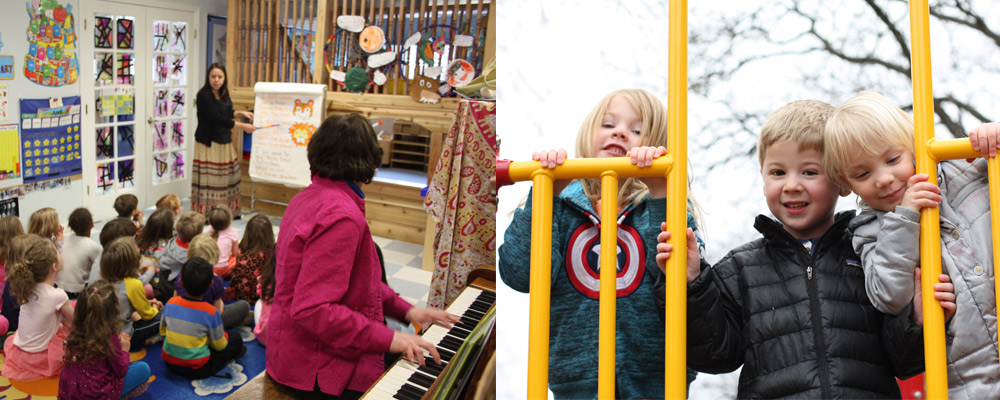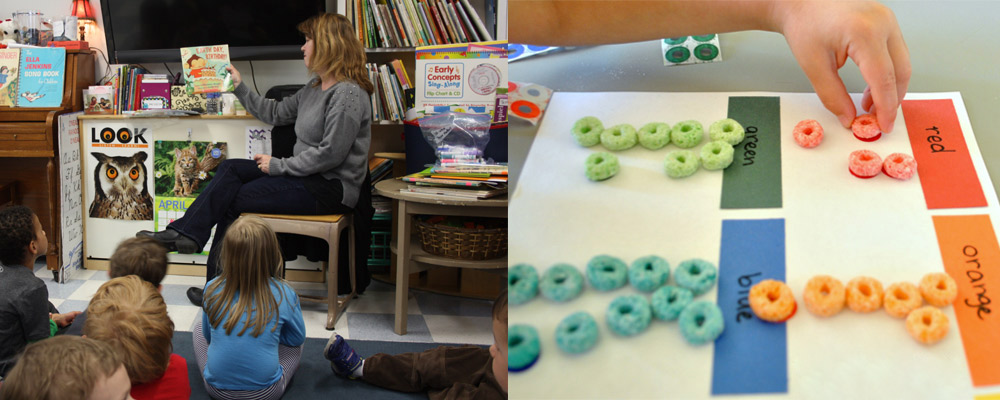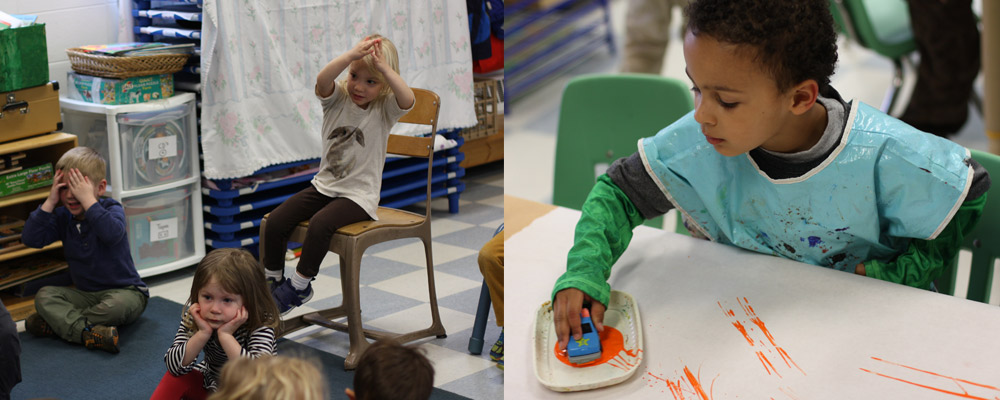The Barbereux School provides an environment conducive to the natural development of young children. We believe education is a process of unfolding rather than acquiring, and little children learn best through many play-based opportunities that allow them to manipulate and explore their environment and ideas. The act of learning through discovery makes the knowledge much more meaningful. The teacher’s main goal is to set up the classroom and guide the child towards discovery. Play experience is tailored and reshaped based on each child’s individual needs.
The Barbereux School emphasizes a developmentally appropriate, integrated curriculum in which language arts, math, science, and social studies, as well as the social, emotional and physical needs of each child are met through a variety of related activities.
Play is emphasized as one of the most important opportunities through which children acquire skills. Individual, small, and large group activities are used to target and facilitate skill learning. One play or group activity will incorporate skill development in a variety of curricular areas. Chosen activities revolve around the overall curriculum goals and the individual needs, interests, and strengths of the children in the classroom. The faculty at Barbereux relies on the emerging interests of the students to develop many of their curriculum themes that are integrated throughout all subject areas.

The Arts: The Centerpiece of an Interwoven Curriculum
Music education and the cultures from which it was created is the historical centerpiece of The Barbereux School curriculum. A music specialist has always been employed since the school opened.
Music develops the child’s voice, control, attention, and imagination. The Natural World is musical and the song of the birds and the whisper of the wind and the hop of a rabbit are related to the music lessons through song, and rhythm instruments and movement. Through daily activities such as these, children experience the joy of singing and expressive movement while learning musical concepts: pitch, balance, melody, an rhythm.
Dance is music’s partner. Dance is important in developing spatial awareness, grace, and coordination for ever-changing, fast-growing bodies. Dance is also presented in scientific terms as a perception tool to study the space you design expressed by a creative response to rhythm or to a kinesthetic feeling like weight or lightness, slow motion or rapid or to the poetry of the music. Spatial intelligence is developed through such lessons.
Visual Arts like drawing, painting, printmaking, finger painting, creating collages and murals, and modeling with clay are some of the many mediums available to children for artistic expression. Exploration and experimentation is encouraged. Children take nature walks with sketch books or collect natural objects for a collage.
Dramatic play is encouraged in all the classrooms, which have a dramatic corner where dress up and imaginative stories can evolve. Children pantomime their favorite storybooks and devise plays that dramatize historical events and personal stories. The teachers are great storytellers and cherish this time to honor a timeless childhood tradition.
We hope that you will always hear a singing child or see a dancing child in the rooms and playground of The Barbereux School.

Social and Emotional Development
The teachers and staff emphasize the positive qualities of character development during all school activities. Teachers model the behaviors and qualities they wish to promote and teach strategies for developing them.
Kindness, appreciation, and respect are primary social emotional goals at Barbereux. These goals are expressed in each classroom with specific courtesies emphasized during:
- Lunch where table manners are practiced
- On the playground where children interact with children of different ages sharing space and playground toys
- In the classroom during large and small cooperative play activities
Independence, self-reliance, responsibility, self-discipline, cooperation, and initiative are primary goals along with our expectations for the children’s cognitive development.
Physical Development
Growing bodies demand physical exercise to assist them in developing balance, strength, coordination, and kinesthetic intelligence. We encourage all the children to run, play, climb, and tricycle ride in our outdoor facility many times a day, weather permitting. We regularly take excursions to our neighborhood park, Bent Park, to use a larger space. Hand-eye coordination and the strengthening of hand muscles for writing is addressed through classroom activities such as play dough, building, and art.

Nature / Science
Hands-on lessons and activities such as gardening, sensory table, nature walks and cooking are natural science lessons that employ the fundamental science skills of observation, engagement, measuring, analysis, and predictions. Student interests often spark choices of topics: nature, simple machines, astronomy, rocks and minerals.
Social Studies / Holidays / Cultures
Diversity is embraced at Barbereux. Learning to respect and appreciate all people and learning about the qualities that help shape our world are important foundations. Young children learn about these abstract concepts best through concrete activities, using books, games, and drama to learn about culture and social situations. Young children learn best about diversity by learning about the different cultures reflected in their environment. We welcome families to help our children learn about the important traditions in their cultures by coming into the classroom and reading a book, preparing food, playing a game, or creating artwork.
